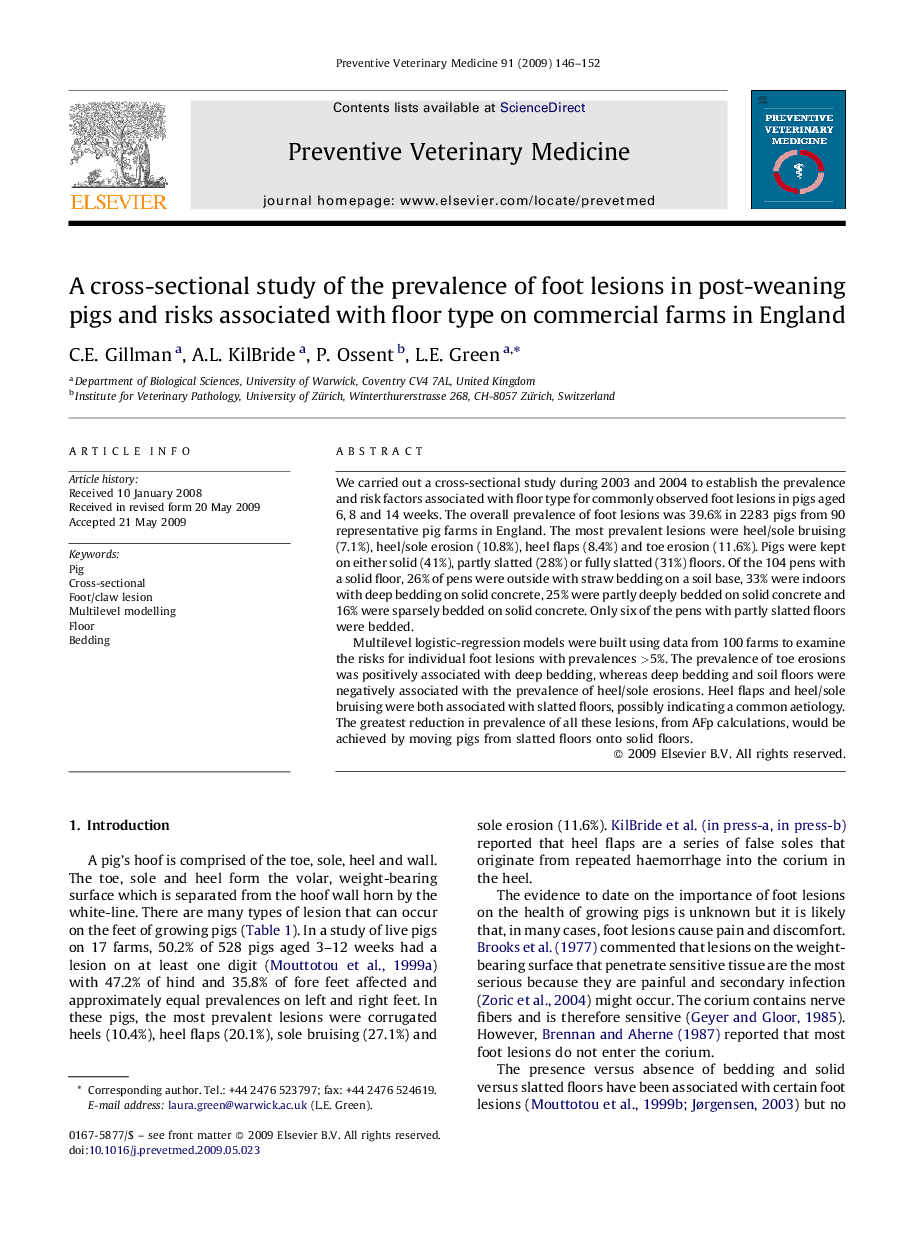| Article ID | Journal | Published Year | Pages | File Type |
|---|---|---|---|---|
| 5794132 | Preventive Veterinary Medicine | 2009 | 7 Pages |
We carried out a cross-sectional study during 2003 and 2004 to establish the prevalence and risk factors associated with floor type for commonly observed foot lesions in pigs aged 6, 8 and 14 weeks. The overall prevalence of foot lesions was 39.6% in 2283 pigs from 90 representative pig farms in England. The most prevalent lesions were heel/sole bruising (7.1%), heel/sole erosion (10.8%), heel flaps (8.4%) and toe erosion (11.6%). Pigs were kept on either solid (41%), partly slatted (28%) or fully slatted (31%) floors. Of the 104 pens with a solid floor, 26% of pens were outside with straw bedding on a soil base, 33% were indoors with deep bedding on solid concrete, 25% were partly deeply bedded on solid concrete and 16% were sparsely bedded on solid concrete. Only six of the pens with partly slatted floors were bedded.Multilevel logistic-regression models were built using data from 100 farms to examine the risks for individual foot lesions with prevalences >5%. The prevalence of toe erosions was positively associated with deep bedding, whereas deep bedding and soil floors were negatively associated with the prevalence of heel/sole erosions. Heel flaps and heel/sole bruising were both associated with slatted floors, possibly indicating a common aetiology. The greatest reduction in prevalence of all these lesions, from AFp calculations, would be achieved by moving pigs from slatted floors onto solid floors.
